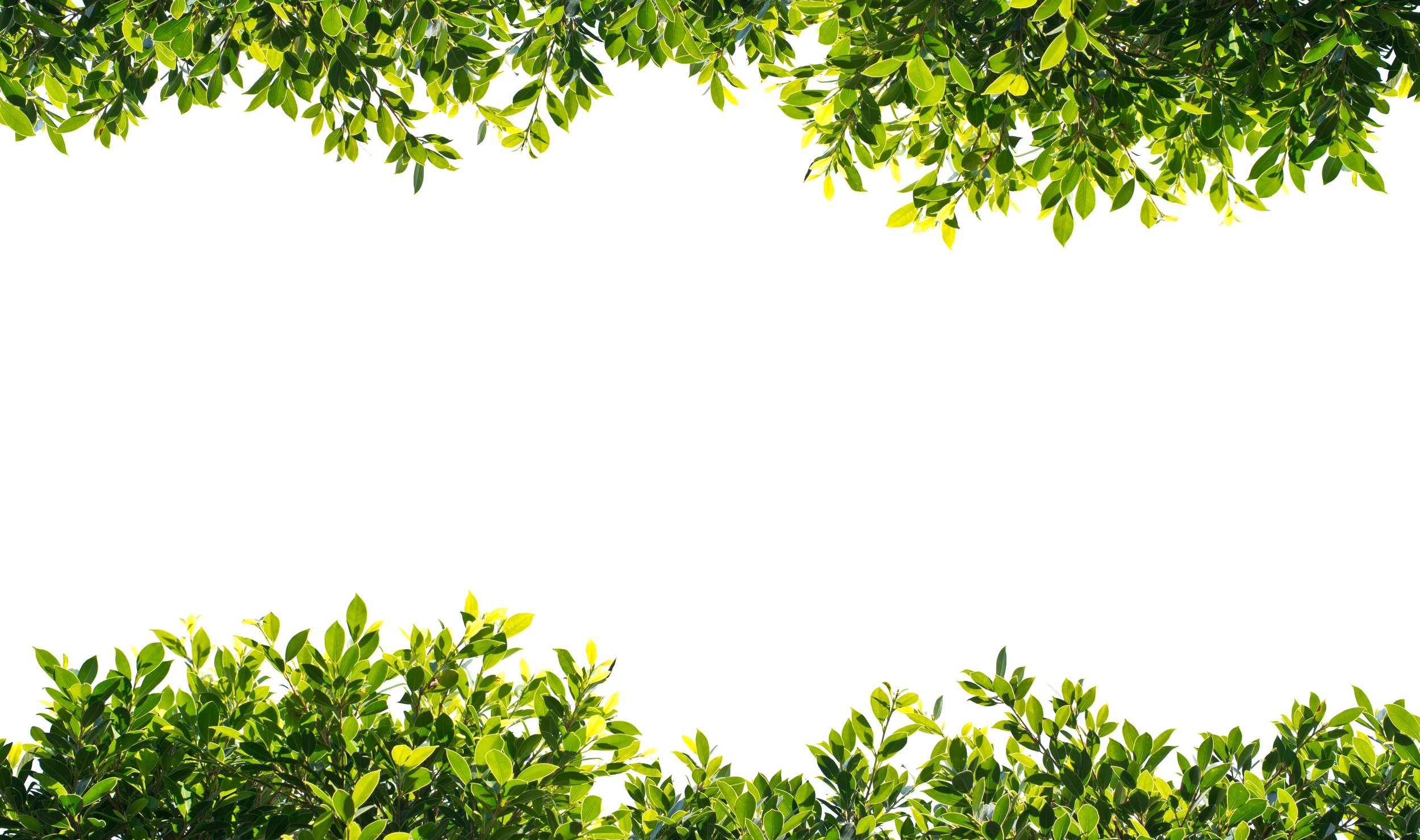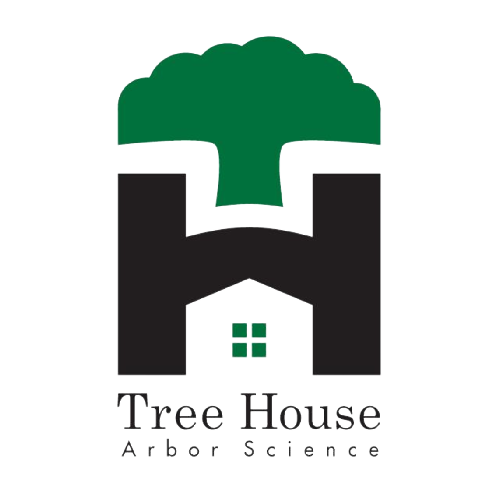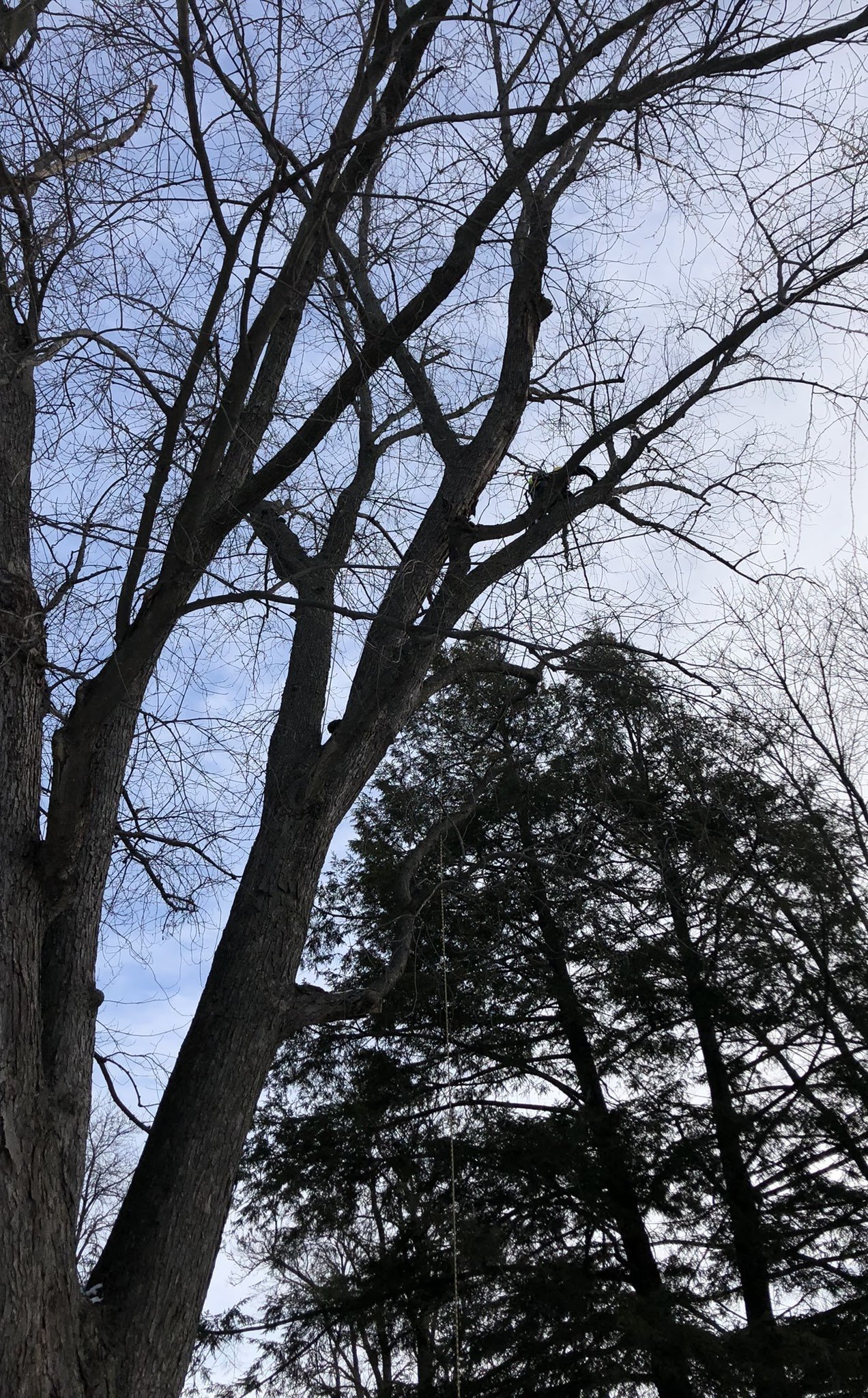
Big trees are essential parts of Madison’s urban forest but they can be a little intimidating to have in your yard. You may worry that your trees will fall and cause injury or damage.
When we evaluate your trees, we may suggest a cabling system, allowing you to keep valuable trees and have peace of mind that these beauties are safe to have on your property.
Cabling Systems Extend the Life of Trees
What is a Tree Cabling System?
Tree cabling systems strengthen, extend the life, and improve the safety of your big trees.
A cable support system uses either braided specialty rope (dynamic cabling) or extra high strength steel cable (static cabling) to connect large branches. The cables allow the tree to move naturally while supporting heavy limbs and decreasing stress on weak areas.
Dynamic cabling is more flexible, allowing for more movement. Static cabling is more secure, providing more support and reducing movement around weakened areas of your trees.
This big Black Walnut tree on Madison’s East Side will live a longer, safer life with the cabling system we installed.
Do Your Trees Need Cable Support Systems?
The most common place for a tree to fail is at a weak union between large, heavy branches.
Tight, V-Shaped Unions
This formation is more likely to be weak than a U-shaped union.
Co-Dominant Stems
This is an arborist term for trees with more than one trunk. The place where those trunks meet is often weak.
Holes or Cavities
Storm damage and insects are two ways a cavity may form. Cavities can rot and they make cozy nesting places for Madison’s resident squirrels and raccoons.
Heavy Crop-Bearing Trees
Apple, walnut, oak, and other nut or fruit-bearing trees are susceptible to heavy crop years, adding weight to the tree and stress to its unions.
Long-Term Benefits of a Tree Cabling System
This Silver Maple tree is a good example of a tree with a structural weakness that we can save. The tight, V-shaped union and its two stems is the weak spot.
As the stems grow, their canopies broaden and they get heavier. This weight puts stress on the already weak union and the tree is more vulnerable to wind and other Wisconsin weather. It can split and fall, causing injury and property damage.
A cabling system connects the stems, drastically reducing or eliminating the forces working to pull the tree apart. This has major long and short-term benefits.
Extends the life of the tree, adding many years of shade, beauty, and value to your property.
Increases the structural integrity and safety of your tree and reduces the risk of injury and property damage.
Reduces the risk of splitting and failure.
Prevents unnecessary tree removal.
Saves money over tree removal.
Frequently Asked Tree Cabling System Questions
How do I know if my trees are weak?
Look for some of the telltale signs of weak unions. More than one trunk, V-shaped unions, and lots of animal activity at a union are all signs that there might be structural weakness.
Having your trees evaluated regularly is the best way to catch weak spots early, when a cabling system can still save the tree.
Are tree cabling systems expensive?
Having a cabling system installed costs much less than having a tree fall or having a tree removed. It’s a relatively low cost way to extend your tree’s safe, healthy lifespan.
Does a cabling system show? Is it ugly?
During the summer, you won’t notice your cabling system at all. Even in the winter, the cables blend in with the surrounding limbs and are inconspicuous.
Do young trees ever need cabling systems?
Most young trees don’t have enough weight to stress their unions. But as they grow, weaknesses become more likely. You can avoid weak unions down the road by having your young trees trimmed regularly so that they do not develop common structural weaknesses.
Are some trees too big for a cabling system?
It is unlikely that an urban tree in Madison has grown too big for a cabling system. To give you an idea of their capabilities, the tree you see here is a massive, 200-year-old Black Walnut that we saved using a cabling system.
Should I get a dynamic or a static tree cabling system?
Our arborists will recommend the best system for your tree. We tend to prefer static systems for their longevity and better support for your trees.
Can I install my own tree cabling system?
No. A cabling system needs to be tailored specifically for your tree’s structure and location. Only a certified arborist is qualified to design and install a tree cabling system. Attempting DIY tree cabling is likely to end with damage to the tree and injury to the DIYer.
Contact Us
If you have concerns about your trees, big or small, contact us and we’ll come out for a free consultation. Fill out this simple form or give us a call at (608) 234-5935.






